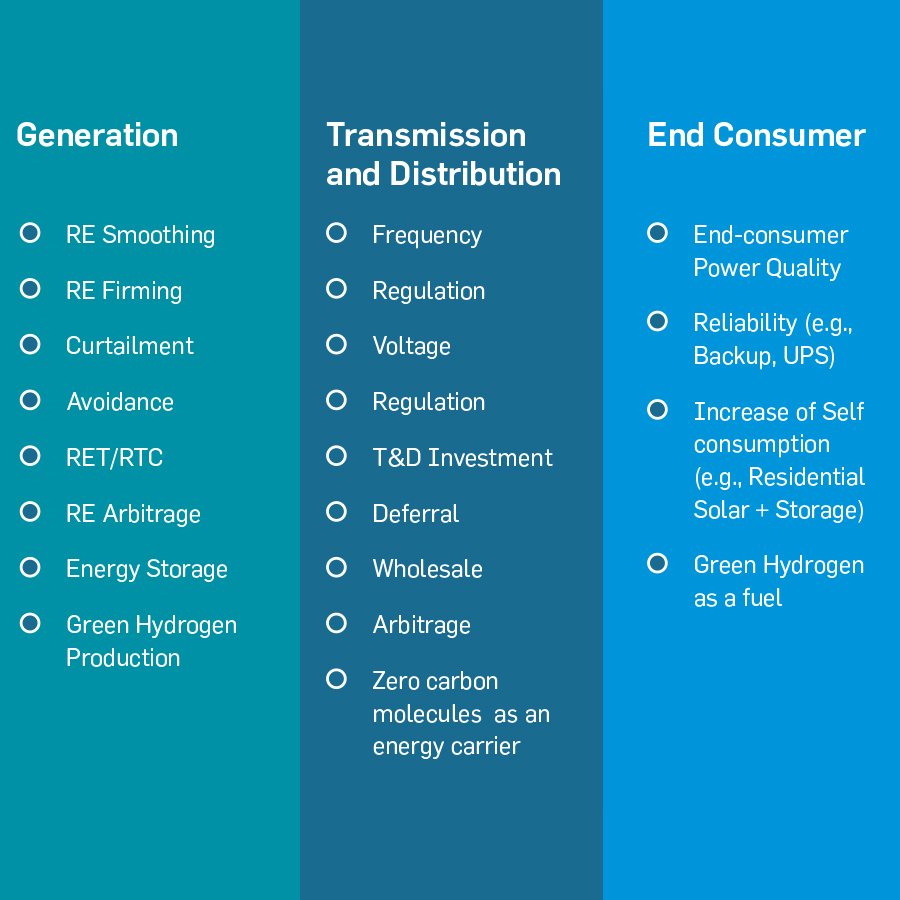Transitioning
to
low-carbon
technologies can create healthier
working conditions, increase the
number of jobs available, and protect
against the destructive impacts of a
warming world. At the same time, the
jobs created from these transitions
will vary across skill levels and
geographies, and may not necessarily
cater to the communities that are
currently engaged in high-emissions
sectors. Climate policy in India has
been built on the pillar of ‘co-benefits’
which uses climate action as a
pathway, rather than an impediment,
to socio-economic development. A
just transition is an important part
of the co-benefits approach due
to its focus on employment and
communities;
in
addition,
unjust
transitions can slowdown or even
derail climate movements through
labour rights protests and long-
drawn legal battles.
The
global
energy
sector
is
undergoing
fundamental
change
–
sweeping
away
entrenched
business models while creating new
opportunities. While predicting the
outcome of this ongoing disruption
is notoriously difficult, it’s a safe bet
that intelligent energy storage will
be a key building block of Grid 2.0.
It is relatively easy to identify three
trends driving the ongoing global
reshaping of the energy landscape:
decarbonization,
decentralization,
and digitization. As the landscape
evolves, charting a safe course
requires
understanding
each
of
these three Ds - while embracing
storage early will help energy users
and producers buffer any potential
shocks in the future.
The decarbonization efforts across
the globe have intensified in recent
times. It is driven by a powerful combination of policy, technology
and market forces. The Paris Climate
Agreement with new global climate
architecture, spreading the mitigation
commitment deeper and wider, will
disrupt the economic landscape
across the sectors in all regions.
Further to Paris Climate Agreement,
the Race-To-Zero efforts by the
businesses, cities and governments
is also driving the demand for deep
decarbonization. As it is well known,
the world community has committed
to keeping global warming below 2
degrees Celsius, and going beyond
1.5. Even the 2-degree goal implies a
massive ramping up of clean energy
technologies and limiting global
warming to 1.5 degrees would require
to reach Net Zero much before 2050.
The demand for deep decarbonization
in energy, industry and transport
sectors
is
complemented
with
decentralization. More distributed
resources make for a more resilient
system and enable small and large
power consumers alike to produce
much of the electricity they need
locally.
Digitalization
opens
up
multiple
possibilities and makes the transition
to Net Zero future feasible and flexible.
Advanced
energy
management
software and control algorithms will
keep grids in balance and optimize
the deployment of various generation
and storage resources according
to market (and thus, if the market
design is done correctly) needs. Such
software will also allow customers to
lower their energy costs by becoming
partially self-sufficient. It will also
enable completely new business
models,
even
helping
generate
revenues that offset at least part of
their deployment cost.
Harnessing New Value Pools
In India, Greenko’s next-generation
energy
utility
promotes
energy
security
and
independence
by
substituting imports of oil & gas
and long-term financial stability by
offering no-escalation-of-electricity
prices. There is a growing preference
amongst
B2B
customers
for
renewable energy, combined with
energy storage as the companies are
committing to deeper cuts in GHGs to
reach Net Zero Emissions by 2050.
The sub optimal coal based captive
power plants now can be replaced
by firm and flexible energy from
next-generation electricity utilities of
Greenko.
Increased share of RE is pushing
greater
intra-day
variations
for
baseload coal, demanding more
flexibility from RE generators. Around
40 GW of generation capacity based
on coal in India is generating power
at a cost of more than Rs.4.20/kWh
and Greenko’s firm RE i.e RE assets
combined with pumped hydro storage
and intelligent energy platform
can potentially compete with such
capacity. Greenko is harnessing
the potential of the Green Hydrogen
market by using the low-cost RE
power for green hydrogen production.
The produced green hydrogen is then
planned to be transported to the
consumer market in the form of Zero
carbon molecules.
The electric grid of the future
would be following the five
principles:
-
Empowering the consumer while
maintaining
universal
access
to safe, reliable electricity at a
reasonable cost;
-
Demarcating and protecting the
commons;
-
Aligning
risks
and
rewards
across the industry;
-
Creating a transparent, level
playing field; and
-
Fostering open access to the grid
These principles would help
future-proof the grid with
the flexibility, resilience, and
scalability to meet future
needs. Further, the attributes
for the future distribution edge
platform will be:
-
Network efficiency, resilience,
and reliability;
-
Level playing field for all
resources;
-
Innovation;
-
Transparent incentives to
promote technologies that result
in social benefits;
-
Minimize complexity;
-
Support the harmonization of
business models.
Three pillars of
Greenko, RE,
Storage and Zero Carbon
Molecules will
harness multiple
value pools
in the ‘future’
distribution edge
platform
Value Creation Pools
Due to new business models that involve IRESP, Green Hydrogen production, and Zero
carbon molecules synthesis, the new value pools in different segments of the value
chain will be;
Different Segments

Next-Generation Green Energy
Greenko’s new generation energy
utility is designed to harness vital
value pools proactively by developing
state-of-the-art
multi
GW
scale
Integrated
Renewable
Energy
Storage Projects ‘IRESP’. The group
has already initiated the development
of Integrated Renewable Energy
projects with a total capacity of 48.98
GWh across 4 states of India. The
IRESPs are in the pre-construction
phase with a total capacity of 15.82
GW and are located in the states
of
Andhra
Pradesh,
Karnataka,
Rajasthan, and Madhya Pradesh. The
IRESPs are expected to harness the
power of solar and wind resources
with digitally connected storage
infrastructure to provide scheduled
and flexible power to the grid. Please
refer to chapter 4.4, for more details
concerning the specifications of all
the IRESPs.
The IRESPs are combined with Intelligent
Energy Platforms to offer flexible renewable
energy that can harness many value pools in
the electricity system. The business model
is a ‘sharing platform of renewable energy
storage combined with green hydrogen
production and transportation of the same
in the form of green ammonia or synthetic
natural gas. This offers multiple services to
RE generators, grids, distribution companies,
refineries,
fertilizer
companies,
traders,
gas companies, and various consumers
throughout the business model.
Converting hydrogen into other energy
carriers, such as ammonia or synthetic
hydrocarbon fuels, involves higher costs
but in the case of fuels it also allows easy
transportation and storage of hydrogen, and
it is compatible with existing infrastructure
or end-use technologies (as in the case of
ammonia for shipping or synthetic kerosene
for aviation).
Greenko’s Green Hydrogen and Energy Carrier Architecture
The unique pumped hydro storage systems would enable dispatch of the lowest cost RE power for Green Hydrogen Production
and it could be further synthesized into Zero carbon molecules and transported to the market in the form of green ammonia or
synthetic natural gas. The overview of the four major stages involved in the business model is presented below:
Green H2 and Energy Carrier Architecture

The proposed business model aims at developing sustainable revenue-generating assets in the long-term from which Greenko
has estimated to achieve 50% EBITDA from clean energy services and technology business solutions combined.
Zero-Carbon Molecules Use-Cases
The business model will majorly help in targeting three markets:
- Green Hydrogen production through water electrolysis using RE power would help in
replacing the grey and blue hydrogen production methods.
- Synthesizing the produced Green Hydrogen into value-added Zero carbon molecules
that could be transported and stored as required.
- The technological advancements would enable the usage of Hydrogen as fuel in Fuel-
cell electric vehicles (FCEVs) in the future.

1. Other industries include – Edible oils, electronics, diamond cutting, power plants, glass industry 2. A 5% H2 blend (by energy)
with natural gas for city gas distribution 3. HT – hydrotreatment, HC—Hydrocracking

 The key to Greenko’s
growth potential lies
in constantly evolving
innovative business
models based on storage,
intelligent energy and new
energy options. Greenko
has streamlined project
management activities
and established a lean
corporate structure which
aids in higher revenues,
better growth and reduced
operational costs.
The key to Greenko’s
growth potential lies
in constantly evolving
innovative business
models based on storage,
intelligent energy and new
energy options. Greenko
has streamlined project
management activities
and established a lean
corporate structure which
aids in higher revenues,
better growth and reduced
operational costs.





